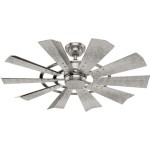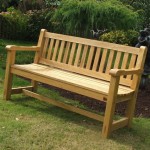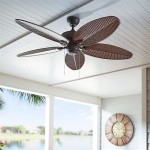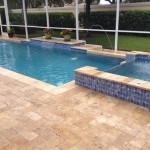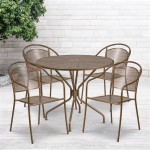Outdoor Kitchen Wood Frame Plans: Creating a Culinary Oasis
An outdoor kitchen is a fantastic way to enjoy warm weather, entertain guests, and create a truly unique space in your backyard. Wood frame construction provides a durable, aesthetically pleasing, and budget-friendly option for building your dream outdoor kitchen. This article will guide you through the process of creating your own wood frame plans, covering key considerations, essential components, and helpful tips to ensure a successful project.
1. Design and Planning
Before starting any construction, a well-thought-out plan is crucial. This involves considering the size, layout, and features of your outdoor kitchen.
First, determine the overall dimensions of the space. This will influence the size of the countertop, the placement of appliances and cooking areas, and the overall aesthetic. Next, prioritize your appliances. Consider what is most important to you, such as a grill, a refrigerator, a sink, or even a pizza oven.
The layout of your outdoor kitchen is also important. You will need to consider the flow of traffic, the proximity of appliances, and the location of storage areas. It's essential to plan for accessibility and functionality, ensuring that you have sufficient space for movement and convenient access to your appliances.
Additionally, think about the style and design of your outdoor kitchen. Do you want a rustic, modern, or traditional aesthetic? The choice of materials and finishes will play a crucial role in creating the desired ambiance.
2. Framing and Construction
The framing of your outdoor kitchen is the foundation of its structure. This stage requires careful planning and precise execution. Using pressure-treated lumber for the frame is recommended for its resistance to moisture and rot, ensuring longevity in outdoor environments.
Start by creating a level base for the frame using concrete blocks or a concrete foundation. The frame itself can be built using 2x4 or 2x6 lumber, depending on the size and weight of the appliances and countertops. Remember to build in support structures for appliances, countertops, and cabinetry, ensuring they are securely attached and can withstand the weight and movement.
When constructing the frame, consider using a combination of screws and construction adhesive for added strength and stability. Also, pay attention to the details, such as proper bracing and corner joints, to ensure the structure is robust and can withstand the elements.
3. Finishing Touches
Once the framing is complete, you can start adding the finishing touches that give your outdoor kitchen its unique character. This involves choosing the right materials, finishes, and accessories.
For countertops, consider options like granite, quartz, stainless steel, or even concrete, each with its own advantages in terms of durability, style, and maintenance. Choose materials that complement the overall design and style of your outdoor kitchen.
Cabinets can be custom-built or purchased pre-made. Opt for weather-resistant materials like cedar, teak, or composite wood to ensure longevity. You can also add decorative touches like hardware, lighting, and even built-in storage solutions.
Consider adding amenities like a bar area, a fire pit, or even a pergola for shade and ambiance. The possibilities are endless, and you can personalize your outdoor kitchen to suit your needs and taste.
4. Safety and Regulations
Safety is paramount when working with electricity, gas, and water in an outdoor kitchen. Consult local building codes and regulations regarding electrical wiring, gas line installation, and plumbing.
Ensure all electrical wiring is properly grounded and installed by a licensed electrician. For gas lines, consult with a qualified plumber or gas fitter for proper installation and safety measures. When working with water lines, consider using frost-proof faucets and proper drainage to prevent damage due to freezing temperatures.
Maintain a safe working environment by using proper personal protective equipment, ensuring good ventilation, and being mindful of potential hazards.
5. Helpful Tips
Here are some additional tips for success:
*
Utilize a building plan:
A detailed plan with accurate measurements is essential for a smooth construction process.*
Consider the weather
: Plan for variations in temperature and humidity.*
Prioritize drainage:
Proper drainage is crucial to prevent water damage and ensure a clean and dry environment.*
Choose durable materials:
Select materials that are resistant to moisture, insects, and weathering.*
Think about maintenance:
Choose materials and finishes that are easy to clean and maintain.*
Plan for storage:
Designate space for storing utensils, grilling tools, and other essentials.*
Add personal touches:
Make it your own by adding decorative elements and personalized features.Building a wood frame outdoor kitchen can be a rewarding and enjoyable project. With careful planning, quality materials, and attention to detail, you can transform your backyard into a culinary oasis for years to come. Remember to prioritize safety, follow building codes, and consult with professionals when necessary.

Outdoor Kitchen Part 3 Main Cabinet Framing Shit I Built

Diy Outdoor Kitchen Part 1 It S All About That Base Nor Cal Diyers

Outdoor Kitchen Construction Build An Landscaping Network

How To Build An Outdoor Kitchen The Home

Step By Guide To Building The Perfect Outdoor Kitchen Diy Plan Projects Plans

Diy Outdoor Kitchen Frames Hotsell

Build Your Own Outdoor Oven Kitchen Seared And Smoked

Diy Budget Outdoor Kitchen Build Part 2 Blackstone Area Vevor 616

How To Build A Diy Outdoor Kitchen Family Handyman

Outdoor Kitchen Rogue Engineer

